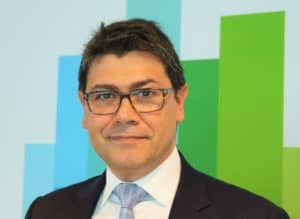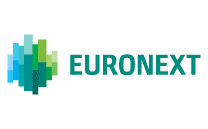
Georges Lauchard, chief operating officer, Euronext
It has been just over a year since you joined Euronext as COO – what has been your approach to innovation over that period?
It comes down to the culture of Euronext, and that is the part that I find really fascinating. I came from a different kind of organisation, but I love that this company is focused on innovation, creating a culture that is dynamic, and constantly rethinking how it operates going forward.
There has been a real transition from a few years ago to where we are now, becoming the number one exchange in Europe. Therefore, the demand from a scalability perspective is completely different, and takes the operating model conversation to a whole new level.
The company has an appetite for change. It is driven by the fact that it has grown so much, and has continuously adapted in support of this. It is ever evolving, and there’s no end in sight for innovation! When you have the business, technology, and operations teams working together, you get the best outcome in terms of what matters to the client and the firm. This mindset is very precious.
What technologies do you see as the most exciting in the exchange technology space?
The cloud stands out to me. The whole point of that technology is that it provides scalability and agility. It allows us to consider the ever changing and evolving needs of our clients and businesses, and to adapt more quickly. Our cloud-first strategy is crucial as we become more nimble and move towards more data usage.
In terms of interacting with our clients and focusing on the customer journey, digitisation is a major component. Here, we are talking about transforming how we interact with our clients and their customer experience. You can achieve this when you digitalise the way the process should be, as opposed to the way it is. There’s also the application of data science, machine learning, and natural language processing (NLP). These elements then provide a whole different capacity in delivering your product to your client.
How do you ensure your innovation and technology investments match the pace of your growth through M&A?
We are a financial infrastructure and we want to be the number one in Europe. Technology is a key component of this, and we are constantly investing. We have a strategy called “Let’s Grow Together 2022”, and recently completed a number of the investments and targets in advance of that plan. There is a client centricity, customer journey, digitisation, operational excellence component that has been crucial to this strategy.
The key here is that we’re not just an exchange, we are also a post-trade business. We have acquired a number of central securities depositaries across the Group and these are technology heavy businesses. We also have Euronext FX, our FX business, and the Technology Solutions business, where we sell our trading software to other venues, including exchanges, providing them with best-in-class technology.
Given the growth within Europe’s capital markets, how much emphasis are you putting on resilience, monitoring, and control framework?
It is imperative to have the highest level of availability, resiliency and capacity as well as be deterministic in our infrastructure, meaning that latency on the exchange is constant and there’s no fluctuation.
With our Optiq platform, we have three areas of focus: prevention, detection and recovery. We have made significant investment on preventative measures and detection, being much more granular in our detection capability and using machine learning there. Then, we’ve worked with clients on recovery. If the first two layers of security don’t solve the problem initially, then we work closely with clients to make the recovery as fast as possible with a clear framework around it.
In the ever-changing regulatory landscape, how has Euronext adapted in terms of its APA/ARM transaction reporting?
The key thing with our APA/ARM is that it really is a scale business. We’re talking about millions of transactions that are being reported on a daily basis across a significant number of customers within a changing and complex regulatory framework.
If you look at Euronext, we’ve grown substantially over the years, and that scale differentiates us as we grow across Europe. As a result of that, in the regulatory space we have made significant investment in terms of stability, resiliency and scalability, but also in managing and making it as easy as possible for customers to understand their requirements.
With other exchange groups pulling their service, was there an active decision to keep yours going and investing into it?
The APA/ARM is very much a regulatory requirement and is an integral part of operating as an exchange. It is a required and necessary offering. For us to exit this business, would not make any sense. We have a number of obligations for our members to do regulatory reporting, so the investment we’re making is utilised across our customer base.
Moving into your second year as COO, what other priorities do you have from a technology and operations perspective?
Technology is a heavy consumer of energy. As a team, we have a strong focus on reducing our carbon footprint. It comes in two ways. One is to optimise the physical server footprint that we utilise. As we migrated from our UTP platform to Optiq, we reduced our server footprint by 66%. This resulted in a 13% reduction in our overall carbon footprint.
We are also working with our data centre providers on renewable energy. Making sure we have 100% renewable energy in those centres has become a major focus point for the company.
